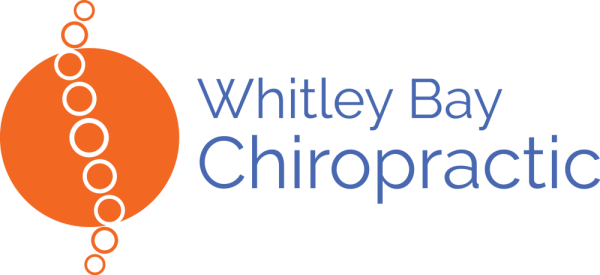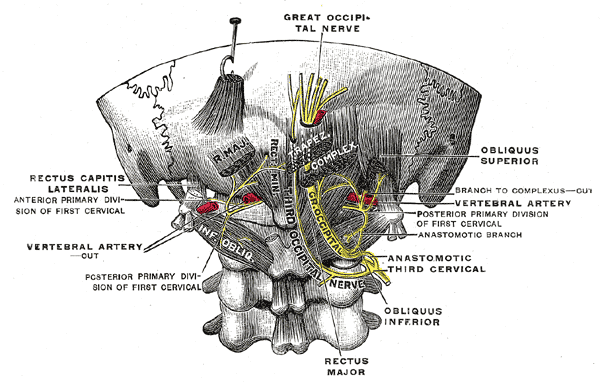Tension Headaches: Myofascial Release
Patient Guide: Occipital Headaches
Tight suboccipital muscles have been linked to headaches(a). Disorders like cervicogenic (neck generated) headaches have been clinically associated with dysfunctions of the upper cervical spine(b), decreased range of motion at the top of the neck is likely to be associated with headaches. A loss of forward upper neck bending, and a loss of backwards lower neck bending where linked to headaches. Video animation showing the suboccipital muscles in 3D.
What is Occipital Neuralgia?
Most of the feeling at the back and top of the head is transmitted to the brain by the two greater occipital nerves. Both sides of the head have a branch that runs to the area. The nerves emerge from between bones of the spine in the upper neck, the two occipital nerves make their way through muscles at the back of the head and into the scalp. The nerves do not supply the face or the area near the ears(a). When the muscles of the upper neck are tight they can have an effect on the nerves.
What is Myofascial Release?
Myofascial Release is a hands-on soft tissue treatment of ligaments, muscles, tendons and nerves. One effective form of Myofascial Release using movement during treatment is Active Release Techniques (ART). It is the market leading soft tissue therapy in the world, used extensively in the treatment of professional athletes. In the case of a neck muscle, the technique involves a manual pressure being applied to a shortened muscle in the top of the neck. The patient moves his or her head in a direction that lengthens the muscle. During the movement the therapist maintains a tension on the muscle, as it slides out from under the therapist’s fingers. The treatment hurts a bit (most patients describe it as a “good hurt”), and it feels like a stretch that you need but can’t do yourself. When a muscle is tight the technique works by increasing the nervous system’s tolerance to stretch the muscle
How does ART work in treating stiff necks and cervicogenic headaches?
ART allows the therapist to isolate treatment to each individual small muscle of the neck, and treat it through its full range of motion. The neck muscle s are layered and to isolate them during treatment requires careful attention. Here is a video demonstrating the technique to help restore a loss of neck rotation.

